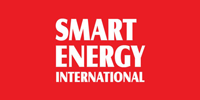
South Korea industrial firm Hyosung Heavy Industries Corp. is making a move into the U.S. energy storage market.
Hyosung announced this week that its Energy Storage Systems department is now open for business selling products ranging in size from 125 kW to more than two MW. These are marketed to the American commercial, industrial and utility-scale sectors.
“The cutting-edge energy storage products can be paired with renewable generation sources such as solar PV in a microgrid configuration or be used as a stand-alone battery storage system,” reads the Hyosung release. “As the need for more efficient use of renewable and clean power increases in the U.S., Hyosung’s advantages of company strength and product experience will be valuable assets to utilities and commercial customers alike.”
The founding Hanyoung Industrial Co. was started in 1962 and produced South Korea’s first ultra-high voltage transformer seven years later. The company changed its name to Hyosung in 1977.
Hyosung has deployed more than 1,280 MWh of ESS over the last decade, the company says. They have been the largest whole-system ESS supplier in S. Korea.
The U.S. energy storage markets generates more than $1 billion per year and is expected to top $3 billion and more annually within the next decade. AES, NRG and NES Energy Solutions are among the competitors domestically.
read more












